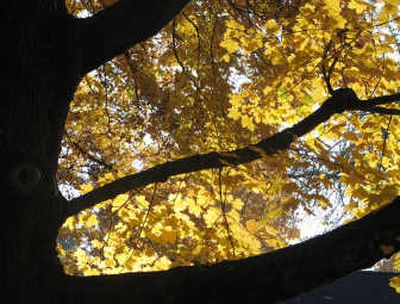Austrian peas can enrich soil

I have four large maple trees in my yard. Several years ago I had them trimmed. I rented a chipper and chipped the limbs on the garden and tilled them under. This has seemed to sour the soil. Perhaps it depleted the nitrogen. The last several years since I did this my garden has done very poorly. I am considering planting peas to build up the nitrogen. In your article recently you suggested using Austrian peas for a cover crop. Where might I be able to find these seeds?
Harold Mallgren,
Spokane Valley
Fresh wood chips are best used as mulch rather than a soil amendment. You are right; they pull too much nitrogen out of the soil as they break down. Stockpile them in the future and let them age a year or more and then use them as a summer mulch to hold in moisture. Now you need to rebuild the organic matter in the soil by working in compost, straw (not hay), or leaves this fall. You have a large garden, so you may have to do this in stages over the next couple of years. Planting Austrian peas this fall is a start and will help add extra nitrogen and organic matter back to the soil. They are available at Northwest Seed and Pet and other farm supply stores and online at Peaceful Valley Farm Supply ( www.groworganic.com).
Native grasses
We live in a semirural setting near Newman Lake. Rather than install the typical lawn landscape, we chose to use native grasses and to maintain only a small “green area” around the periphery of flower beds and walkways. We maintain this border area by mowing and watering frequently. The rest of the area has not been mowed, as was suggested to us by many wild and native plant experts. However, in most areas, the grass (a combination of hard fescue, sheep fescue, and a minimal amount of Reuben’s Canada bluegrass) has become quite tall and is lodging. The question is: Should we cut this grass and, if so, should the cut material be removed? Most folks tend to recommend leaving it as is, but we are uncertain as to how this will affect the grass next year. Any suggestions would be quite helpful. Thanks.
Dick Pospahala
Your quandary is shared by many people trying to do the same thing. You don’t say how tall it is, but the fescues you planted can get a foot tall, not counting seed heads. Unless the bluegrass is dominating, I would leave it alone. This year’s stand will be laid down by the snow over winter and make a nice mulch to keep weeds from sprouting between clumps. If your grass is thin in places, it can be mowed and left on the ground in the fall to knock the seed closer to the ground so more germinates next spring. Some people mow in early July to reduce wildfire hazards that are a concern in your area.